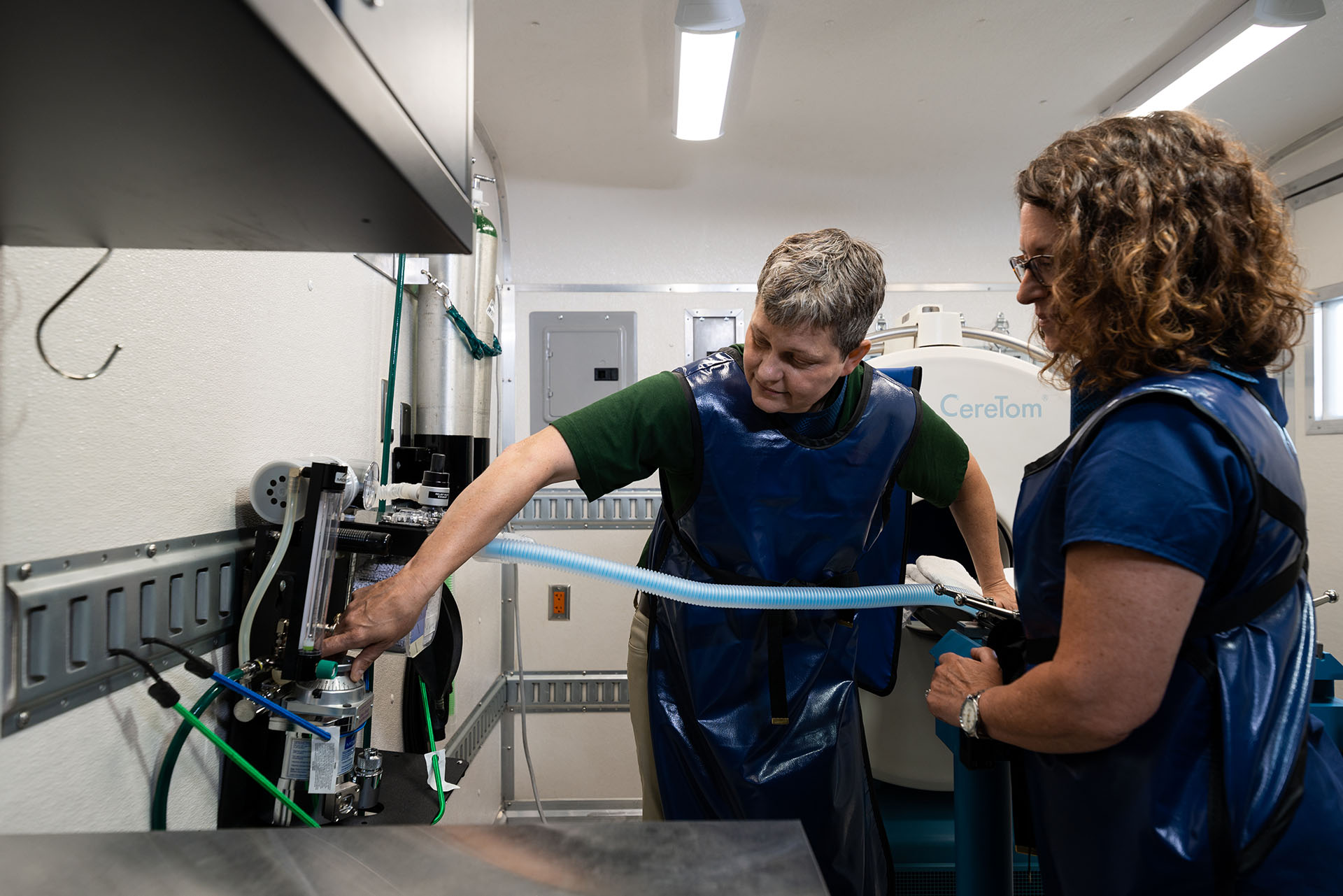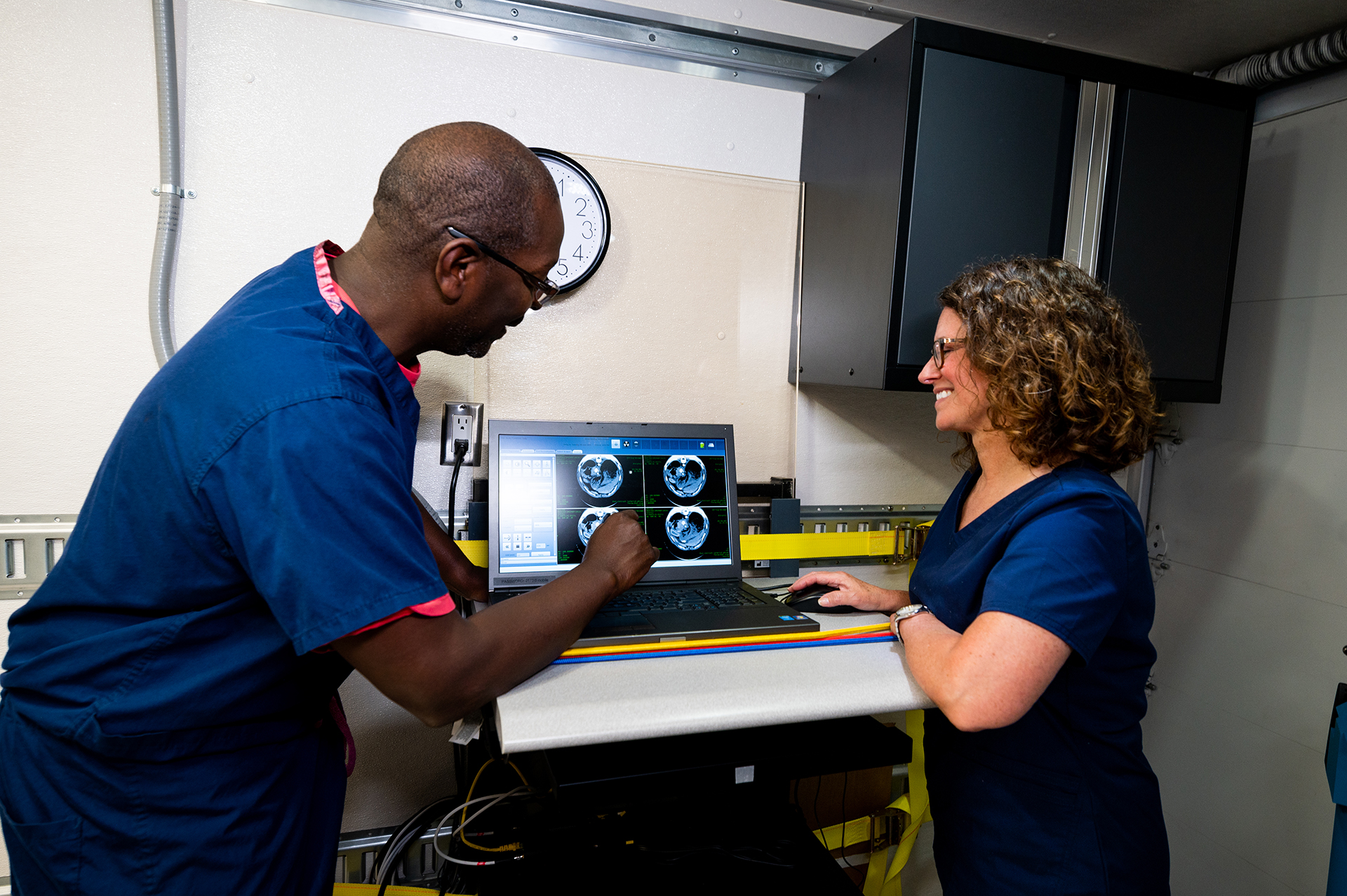Veterinary diagnostic imaging plays a crucial role in the early detection, diagnosis, and treatment of various medical conditions in animals. With advancements in technology and equipment, diagnostic imaging has become an integral part of modern veterinary medicine. It allows veterinarians and diagnostic imaging specialists to visualize the internal structures of animals, aiding in the diagnosis of conditions that would otherwise be difficult to detect. Diagnostic imaging has become particularly important for the early detection of diseases in animals, which can help to improve their prognosis and overall health outcomes.
When To Call Us
When to Call for Vet Diagnostic Imaging
A Quick Reference Guide
There are many indications for using CT scans for diagnostic evaluations in animals. Use this as a quick reference guide for when to call and schedule services from our mobile CT unit at your hospital, clinic, or zoo.
Head
- Chronic nasal discharge – polyps vs neoplasia vs fungal vs foreign body
- Chronic otitis – masses, otitis media
- Facial trauma
- Ocular disease
- Oral masses
- Dental disease
Thoracic Disease
-
Thoracic disease
- Metastatic check
- Pleural effusions
- Pneumothorax – pulmonary bullae
- Mediastinal/heart base masses
- Lung lobe torsions
Masses
-
Head – including the brain
-
Neck and head – thyroid/sialoceles/parathyroid
-
Abdominal – what/where is the mass – surgical planning – is it operable?
-
Body wall – vaccine sarcomas/invasive lipomas – surgical planning
-
Bone – cancer vs osteomyelitis vs cysts vs proliferative diseases
Intervertebral Disk Disease (IVDD)
- Cervical, TL, LS (cauda equina)
- Good for chondrodysplastic breeds (Dachshund); less so with French Bulldogs
- No myelogram as it’s usually not necessary
Trauma (whole body)
- Excellent for defining skull/facial, rib, and pelvic fractures which can be extremely difficult to define on radiographs
- Source of hemoabdomen – liver/spleen
Abdominal Disease
-
Pancreatitis/adrenal disease/hepatobiliary disease – mucoceles, biliary obstructions
-
Metastasis that can be missed on ultrasound due to body conformation or gas
PSS and Other Vascular Anomalies
-
Gold standard (vs ultrasound/nuclear scintigraphy)
Abdominal Foreign Body
Elbow Dysplasia
- UAC/incongruity/fragmented (medial) coronoid process
- (FCP)/radioulnar incongruity/osteochondrosis
Ectopic Ureters
-
We deliver diagnostic services so that veterinarians can make a better diagnosis and provide better care.

How Can Early Detection Improve the Chances of Successful Treatment?
Veterinary diagnostic imaging helps doctors and specialists find problems in animals that are hard to see. It can help them figure out the best way to treat the animal and make it better. Early detection of diseases can lead to better health outcomes for animals because treatment can start sooner. By diagnosing a disease early, the veterinarian has more options for treatment and can design a personalized plan for the animal patient. Early detection also allows veterinarians to monitor the animal’s progress over time, which can help improve outcomes.
Importance of Seeking Professional Veterinary Care
While early detection is critical in ensuring successful treatment for animals, it is equally important to seek professional veterinary care. Veterinarians are trained and licensed professionals who specialize in animal health and can provide personalized guidance, diagnosis, and treatment for your animal. Seeking professional veterinary care can not only help your animal get the right diagnosis, but it can also help prevent further damage and complications.
Professional veterinary care can also provide preventive measures that can help keep your animal healthy in the long run. Regular check-ups, vaccinations, and dental cleanings can all contribute to detecting and preventing potential health problems before they become serious issues.

Signs That Your Pet May Need Diagnostic Imaging
While all animals may experience occasional symptoms like vomiting or diarrhea, there are certain signs that your pet may need a diagnostic imaging service to identify underlying medical issues. Here are some common symptoms that indicate your pet may need immediate diagnostic imaging service attention:
- Limping or favoring one limb – Limping or favoring one limb may indicate a fracture, sprain, or other trauma that requires medical attention. Diagnostic imaging, such as a CT scan, can identify the extent of the injury and help veterinarians create a personalized treatment plan.
- Vomiting or diarrhea – While occasional vomiting or diarrhea may not be cause for alarm, persistent symptoms can indicate serious underlying issues, including gastrointestinal blockages, infections, or even cancer. Diagnostic imaging can help identify the source of the issue and guide appropriate treatment.
- Abnormal behavior – If your pet’s behavior suddenly changes, this may indicate pain or discomfort. Diagnostic imaging can help identify the issue and guide appropriate pain management and treatment.
- Loss of appetite or weight loss – Significant appetite or weight loss can indicate serious underlying issues, including kidney disease or cancer. Diagnostic imaging can help detect any tumors or signs of organ failure and guide appropriate treatment.
- Difficulty breathing – Breathing difficulties can indicate serious underlying issues, including heart disease, lung disease, or other respiratory issues. Diagnostic CT scans can help detect any abnormalities and guide appropriate treatment.
- Unexplained lumps or bumps – New or abnormal lumps or bumps on your pet’s body may indicate underlying medical issues, including tumors or abscesses. Diagnostic imaging can help identify the growth’s composition and guide appropriate treatment.
If you notice any of these symptoms in your pet, it is essential to seek prompt veterinary care. Diagnostic imaging is a critical tool in identifying underlying medical issues and developing appropriate treatment plans to improve your pet’s health and well-being.
Preparation for Pet Diagnostic Imaging
Before undergoing certain types of veterinary diagnostic ultrasounds for your pets, your pet may have specific preparation requirements. Here are some common requirements for fasting, sedation or anesthesia, and safety precautions:
Fasting Requirements
For CT scans, your pet will need to fast for several hours beforehand. This is because food in the stomach and intestines can interfere with the imaging and cause the pet to vomit. Your veterinarian will provide specific fasting instructions for your pet based on the imaging procedure.
Sedation or Anesthesia
Some imaging procedures may require your pet to be sedated or placed under anesthesia to ensure that they remain still during the scan. This is especially important for procedures like CT scans, which require the pet to stay perfectly still for an extended period of time. Your veterinarian will assess your pet’s individual needs and determine the appropriate level of sedation or anesthesia for the procedure.
Safety Precautions
Diagnostic imaging for animals is generally very safe, but there are some precautions that veterinarians and pet owners should take to ensure the safety of both the animal and the veterinarian. For example, X-rays and CT scans emit a small amount of radiation, and while the risk to the pet is minimal, it is important to minimize exposure whenever possible. This may include using protective equipment like lead aprons, limiting the number of scans performed, and ensuring that the imaging equipment is well-maintained and calibrated. Your veterinarian will take all necessary precautions to ensure the safety and well-being of your pet.
Schedule Your Pet’s Diagnostic Imaging Appointment Today!
Veterinary diagnostic imaging is an essential tool for identifying underlying medical issues and developing appropriate treatment plans to improve your pet’s health and well-being. Early detection of potential problems can mean the difference between life and death in some cases, so it’s important to take any persistent symptoms or changes in behavior seriously. If you notice any concerning signs with your pet, contact a veterinarian right away to schedule diagnostic imaging as soon as possible. With their help, you can ensure that your beloved animal gets the care they need for a long and healthy life!
